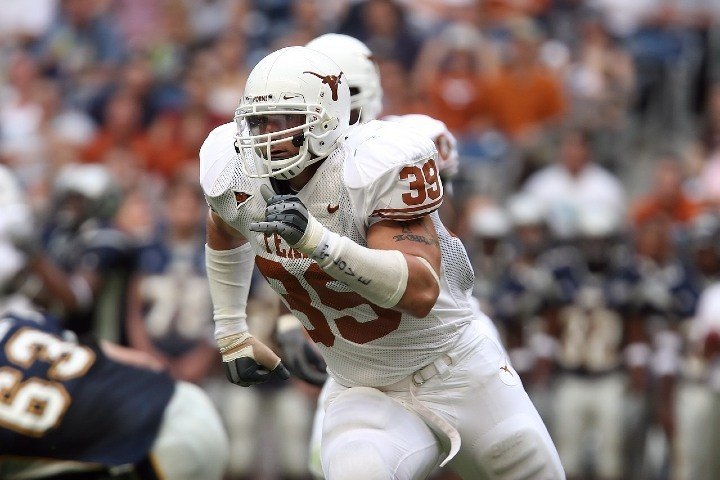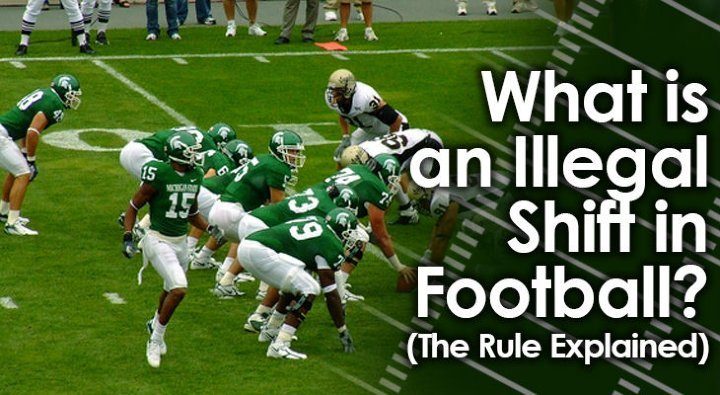In football, as in any sport, there are some easy-to-understand rules and some not-so-easy-to-understand rules.
The “illegal shift” falls into the latter category.
Not many people truly understand what an illegal shift in football is, why the rule is in place, and how referees can spot the infraction.
However, one thing is for certain...
It’s easy to understand how an illegal shift penalty can dramatically affect the outcome of a game.
Time and time again, you see offenses break free for a big play, only to have it called back and nullified by an illegal shift penalty.
It’s one of the most frustrating penalties for offensive coaches, because the infraction sometimes can seemingly have next to no impact on the actual outcome of the play.
That’s why it’s so important for not only players but also offensive coaches to understand what constitutes an illegal shift so that they can adjust their movements and their play calling accordingly.
Let’s take an in-depth look at what an illegal shift is.
The Illegal Shift Explained
An illegal shift is what would be called an “unforced penalty.”
This means that the infraction is caused only by what the offensive players are doing, and not something the defense is doing that caused the offense to make the infraction.
An offensive holding penalty would be a forced penalty, as an offensive lineman may need to hold a defender who is progressing past him toward the quarterback on a pass rush.
An illegal shift is also what’s known as a pre-snap penalty, as the infraction occurs before the center actually snaps the ball to the quarterback.
The infraction occurs when more than one offensive player changes position, or shifts, at the same time.
When this occurs, the infraction happens and the referee throws a flag.
An illegal shift results in a five-yard penalty and a replay of the current down at just about every level of football.

How Illegal Shifts Happen
Offenses are constantly trying to keep defenses off-guard and guessing.
One of the ways they do this is by having players go in motion before the snap.
Football rules dictate that the quarterback may send one player in motion before the snap at a time.
Two players cannot be shifting at the same time pre-snap.
If two players are to shift pre-snap, the first player must come to a complete stop before the second player can begin his shift.
Pre-snap motion can sometimes cause confusion among offensive players, too, and this is when illegal shift penalties occur.
If two players each think they are going in motion pre-snap, then an illegal shift will most likely happen.
If one player doesn’t come to a complete stop before a second player starts his shift, then that will result in an illegal shift as well.
The Difference Between Illegal Shift and Illegal Motion?
The terms “shift” and “motion” seem to be relatively interchangeable words in football lexicon.
As such, it would be natural for you to think that illegal shift and illegal motion are the same penalty.
However, they are not — and there is one very slight, but important, distinction between the two.
An illegal shift is a penalty that is a team foul, meaning the actions of at least two players constitute the foul.
An illegal motion is an individual foul, meaning only one person’s action constitutes the foul.
An illegal motion normally occurs when one player moves toward the line of scrimmage before the football is snapped.
By football rules, players who move toward the line of scrimmage pre-snap must set themselves for at least one second before the ball is snapped.
If they don’t do this, or if the center snaps the ball too soon, then an illegal motion infraction will have occurred.
How to Prevent an Illegal Shift?
So, what is the best way to prevent an illegal shift?
Well, that onus is mostly on the offensive coaches who are designing and calling the plays.
The best idea is to avoid designing and then calling plays that have complicated motions pre-snap, as they can lead to confusion among your own players.
This is especially important for coaches of youth football teams, where players are often just learning how to play the game.
If you want to design a play with a pre-snap shift, try limiting the number of players who will shift to just one.
This will eliminate the need for one player to make sure that everyone is completely set before starting his pre-snap motion.
Another way to prevent an illegal shift is to make sure that the team breaks the huddle with plenty of time left on the play clock.
Illegal shifts often occur when players are hurrying up to get the ball snapped in time before the play clock expires.
By breaking the huddle with plenty of time left on the play clock, there will be no need for the quarterback to call for the snap until he is absolutely positive that the player doing a pre-snap shift is doing so legally.
Conclusion
Pre-snap motion and shifts are very popular in football today.
If used properly and by the rules, it’s a great way to keep defenses off-balance by forcing them to shift their own alignment after the huddle breaks but before the ball is snapped.
This can sometimes result in defensive players being out of position and not properly prepared to defend the play.
That being said, pre-snap motion can often result in illegal shift penalties.
So, make sure that you are designing plays with simple pre-snap motions, and teach your players what constitutes an illegal shift penalty and what they can do to avoid incurring the infraction.

